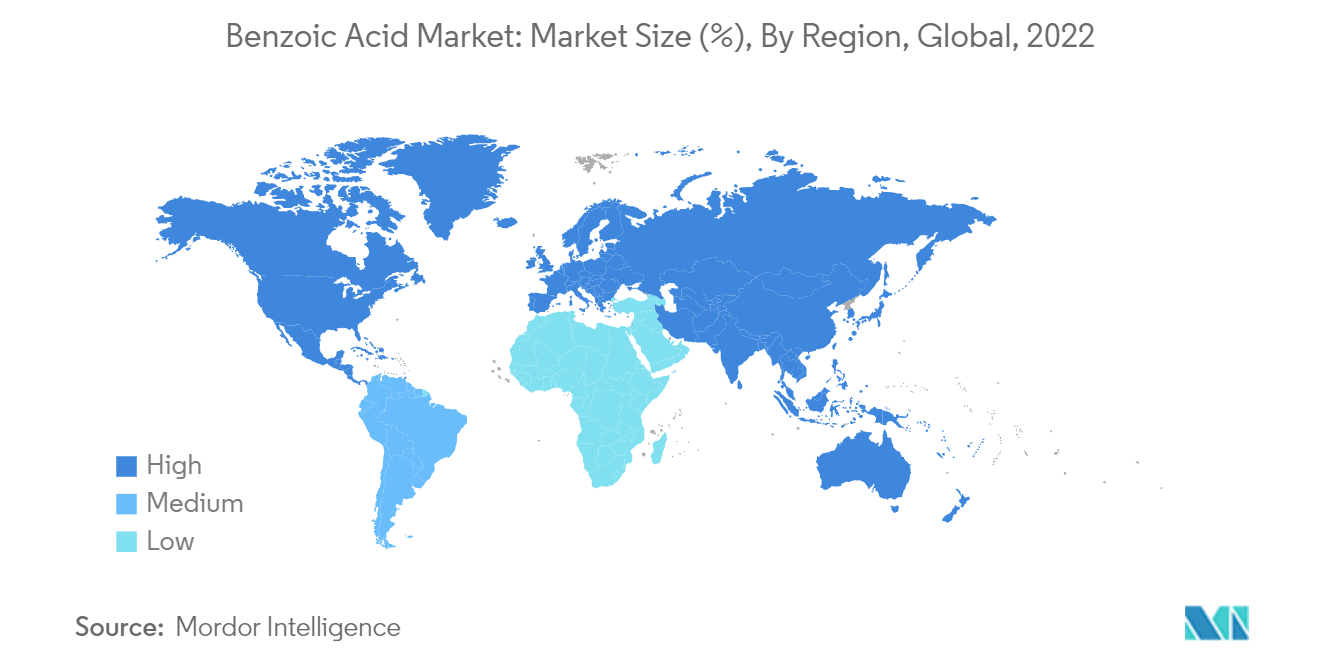Market Trends of Benzoic Acid Industry
Increasing Demand For Processed Foods
The consumer's paradigm shifted toward processed food and beverage products such as snacks, fruit juices, processed meat snacks, frozen meals, and others to meet their daily meal requirement. With the rise in urbanization, growing middle-class population, increase in the number of working women, and the rise in disposable income, the developed and developing regions across the globe are witnessing a rising demand for processed and packaged food, which is thereby increasing the need for food packaging and processing solutions. Therefore, to preserve the freshness, safety, taste, appearance, and texture of processed foods, preservatives like benzoic acid are extensively used in processed and convenience food products. For instance, according to the United States Department of Agriculture, the forecast sales of packaged dairy products between 2017-2022, was 12.3%.
As an illustration, the Mexican market has witnessed an increase in the popularity of ready-to-eat (RTE) food products specially packaged versions of Mexican dishes and recipes, amidst growing urbanization. This trend has been strengthening the overall growth of food ingredients like preservatives, among others. Additionally, the prevalence of skipping meals such as breakfast in many European countries has increased consumers' preference for processed and packaged food and beverage products. As preservatives, including benzoic acid, are an important ingredient in processed food and beverage products, the end-user industries are actively looking for innovation in benzoic acid, which in turn has provided a great opportunity for the manufacturers to attain a significant market position through expanding their product portfolio and product launches.

North America Holds the Largest Share
Among North American countries, the United States is one of the most developed and sophisticated markets in the world. Health and wellness trends, clean labels, organic, functional, innovative product launches, and other value additions are the major drivers for this market. Sodium benzoate was the first chemical preservative that was approved to be used in food manufacturing by the Food and Drug Administration (FDA). Benzoate is used in different food and beverage products such as salad dressings, pickles, sauces, condiments, and fruit juices, among others, and has a varied daily intake capacity mentioned as specified by the government. Furthermore, the growth of the beverage industry across key product categories including fruit juice and carbonated drinks is anticipated to fuel the demand for food acidulants such as benzoic acid. According to statistics discovered by Beverage Digest Factbook 26th edition launched in 2021, carbonated beverage consumption per capita is 38 gallons in the United States. The United States still has some of the highest consumption rates in the world, with over 50 percent of respondents of a recent international survey stating that they consumed soft drinks at least multiple times a week if not every day. Thus, benzoic acid is most effective in low pH environments, specifically less than 5, thereby, making it suitable for use in acidic foods like beverages.
Furthermore, according to Agriculture and Agri-Food Canada, in 2021, the sales of bread totaled over USD 2.66 billion in revenue in the United States. The growing consumption of bakery products in different regions is creating a propelling market for food ingredients like food preservatives including benzoic acid, which plays an important role in the manufacture of bakery products.


